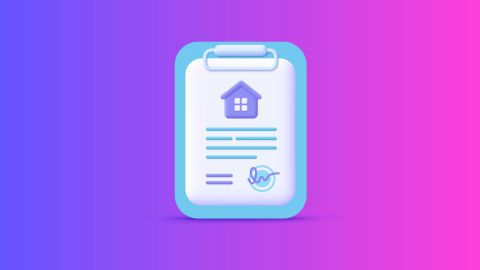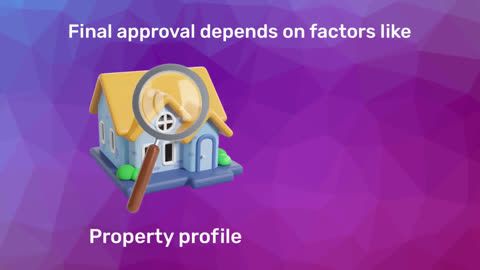Let’s dive deeper into what exactly a demand letter is, its purpose, and how it impacts your home loan journey.
Understanding the demand letter
A demand letter is essentially a formal request from the builder to the borrower for payment. When you buy an under-construction property, the payment is often made in stages, depending on the progress of the construction. The builder issues a demand letter each time a certain phase of the construction is completed, asking for the corresponding payment as per the agreement.For example, if the construction reaches a particular milestone, such as the completion of the foundation or a specific floor, the builder will issue a demand letter to notify the borrower that a payment is due for this phase of the project.
Key components of a demand letter
A demand letter typically includes the following information:1. Payment amount: The total amount that the borrower is expected to pay for that particular phase.
2. Due date: The deadline by which the payment needs to be made.
3. Construction milestone: A description of the construction stage that has been completed, justifying the payment request.
4. Payment instructions: Details on how the payment should be made, whether it is through a direct bank transfer or some other means.
Why is the demand letter important?
The demand letter plays a crucial role in the home loan process. Here is why:1. Loan disbursement: Lenders require this document to release funds in stages. The borrower submits the demand letter to the lender, who verifies the construction progress. Once the lender is satisfied that the project is progressing according to the plan, they release the payment to the builder.
2. Financial planning: For borrowers, receiving a demand letter helps in financial planning. Since home loan payments are linked to construction progress, a demand letter serves as a signal that it is time to arrange for the next instalments, either through personal funds or the loan.
3. Documentation: The demand letter also acts as an official record of the payment requested by the builder and helps in keeping track of the amount disbursed by the lender.
Process of submitting a demand letter to the lender
Once the borrower receives the demand letter from the builder, the next step is to submit it to the lender along with other supporting documents. Here is how it works:1. Collect the demand letter: After the builder completes a construction milestone, they will issue a demand letter. This letter, along with the sale agreement and NOC, is given to the borrower.
2. Submit to the lender: The borrower submits these documents to their home loan lender. The lender uses the demand letter to verify the builder’s request for payment and ensure that the construction is progressing as agreed.
3. The lender verifies: The lender may visit the site or request additional documents to confirm the status of the project before disbursing the next payment instalments.
4. Disbursement: Once everything is verified, the lender disburses the payment to the builder, and the borrower’s home loan account is updated accordingly.
Importance of the demand letter in loan disbursement
The demand letter is critical for loan disbursement. Since most home loans for under-construction properties are disbursed in stages, the lender relies on the demand letter to know when each payment is due. This ensures that the borrower does not end up paying for work that has not been completed.It also gives the lender confidence that the funds are being used appropriately for the construction, reducing the risk of project delays or misuse of funds.
How does the demand letter affect borrowers?
Receiving a demand letter means that the borrower is required to make the next payment, either through personal funds or by using their home loan. This can impact cash flow, so it is essential for borrowers to be financially prepared for these payments throughout the construction process.Moreover, if the borrower delays making the payment requested in the demand letter, it could slow down the construction or even lead to penalties imposed by the builder.
Managing your home loan with demand letters
Staying on top of demand letters is crucial to managing your home loan effectively. Make sure to:1. Monitor construction progress: Keep an eye on how the construction is moving forward so you can anticipate when the next demand letter will arrive.
2. Plan your finances: Be prepared to pay for each instalments, either through the home loan or personal savings, as soon as you receive the demand letter.
3. Communicate with your lender: If you foresee any issues in making the payment on time, contact your lender and builder to discuss alternatives.
Explore Bajaj Housing Finance Home Loan
At Bajaj Housing Finance, we offer home loans that cater to your unique needs, including properties under construction. Our home loans come with easy disbursement options, allowing you to seamlessly submit demand letters and receive timely funds as the project progresses. Additionally, we offer flexible repayment terms, affordable home loan interest rates, and quick loan approval processes to help you achieve your dream of homeownership.Before taking a home loan, you can use our home loan EMI calculator to check how much you’ll pay every month. It helps you understand how different tenures and interest rates affect your EMI and principal repayment. You can experiment with different loan amounts and tenures to find what suits your budget best.
Here are a few benefits of opting for a home loan from us:
1. Large loan amount: Turn your dream of homeownership into a reality with a loan amount of up to Rs. 15 crore*.
2. Affordable interest rates: Benefit from EMIs starting at just Rs. 722/lakh*, with interest rates beginning as low as 7.99%* p.a..
3. Quick approval: Get your loan application approved in as little as 48 Hours*, and often even sooner.
4. No foreclosure charges*: If you choose a floating interest rate, you can pay off or prepay your loan without any additional fees.
5. Simple application process: Our easy document pickup service at your doorstep makes applying simple, so you will not need to visit the branch multiple times.
With Bajaj Housing Finance Home Loan, you can experience peace of mind knowing that your funds are being disbursed in stages, aligning with the construction milestones. Our transparent process ensures that your financial interests are safeguarded throughout your home loan journey.




